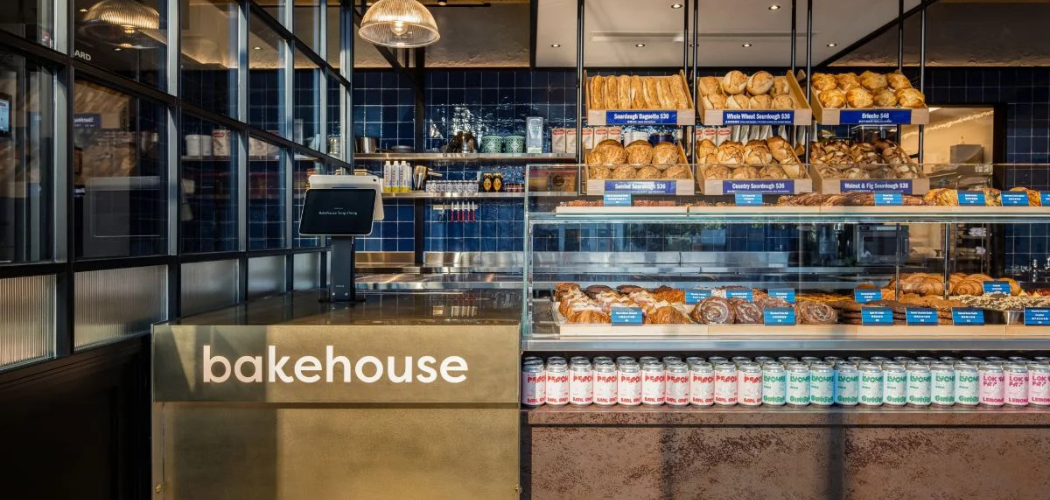 Over the past few decades, businesses and brands have come to understand the importance of charitable giving to customer loyalty. Research shows that consumers – particularly younger ones – are loyal to brands that support causes they believe in. The difference between corporate giving efforts of old and today’s more nimble giving platforms is the ability to place control of corporate giving in the hands of your best customers, and building loyalty with them by facilitating giving to the causes that matter to individual customers. The future of corporate social purpose is one-to-one – and no company understands how to facilitate one-to-one giving better than KULA. For this month’s sponsor spotlight, we ask KULA CEO Alan Goldstein how companies can best leverage the future of one-to-one giving.
Over the past few decades, businesses and brands have come to understand the importance of charitable giving to customer loyalty. Research shows that consumers – particularly younger ones – are loyal to brands that support causes they believe in. The difference between corporate giving efforts of old and today’s more nimble giving platforms is the ability to place control of corporate giving in the hands of your best customers, and building loyalty with them by facilitating giving to the causes that matter to individual customers. The future of corporate social purpose is one-to-one – and no company understands how to facilitate one-to-one giving better than KULA. For this month’s sponsor spotlight, we ask KULA CEO Alan Goldstein how companies can best leverage the future of one-to-one giving.
Q. Tell us a little about KULA, and about the company's mission.
Goldstein: KULA was founded in 2011 as a loyalty platform that allowed loyalty program members to donate loyalty currency to the cause of their choice. Our first client was JetBlue, and over the years we delivered solid giving programs for clients such as Coca-Cola with MyCoke Rewards and Kellogg’s with their Family Rewards program.
When I joined KULA in 2015, my task was to help the company scale the platform. We looked at our business model and ask ourselves, how can we help the most? Our focus then turned naturally to the causes themselves. From the biggest causes to small non-profits and local schools, every cause needs help raising funds. Traditional fundraising takes a lot of time, effort, and volunteers. How can we leverage our loyalty platform to help causes raise money, while at the same time benefiting the brands we work with?
Focusing our efforts on the causes themselves led us to create a platform specifically designed to help them raise money more easily by facilitating loyalty points donations and shopping activities that provide cash-back donations. It’s a much easier way for non-profits and schools to raise money. Because our platform is free for causes to implement, it delivers return in lower cost per dollar raised.
For the brands we work with, we can help them drive acquisition by sending them new customers to shop in exchange for donating a portion of their spend to the causes they support. And we can drive loyalty by helping their loyalty program members facilitate giving through currency donations. It’s a frictionless ecosystem that benefits causes, consumers, and brands alike.
Our mission now is to become a leading channel for marketers by being the number one fundraising platform for causes. In essence, we’re creating a new marketing channel for brands that we call “cause loyalty.”
Q. It’s interesting that you use the phrase “cause loyalty” to describe this ecosystem. How do you see cause loyalty as a tool to help brands drive customer loyalty?
Goldstein: Traditional cause marketing is simply a brand supporting a cause. Most consumers understand that brands do this – but that support is primarily a function of corporate social responsibility. It’s not a marketing plan. “Cause loyalty,” in contrast, is a marketing channel that allows brands to build a relationship with their customers based on facilitating giving to the cause of their choice. You’re building a connection point with your customers based on a strong emotional appeal, and that connection point can help you build real loyalty with them. It used to be that brands couldn't write checks to 1.5 million individual causes. Kula does that every day.
Cause loyalty can also help facilitate relationships throughout the purchase cycle. Because our database includes over 1.5 million 501c3 causes and 120,000 schools, participating causes can drive consumers to brands that facilitate giving through our platform – that’s a real acquisition effect, and it helps the brand begin a real relationship with that consumer based on something other than a discount offer or promotion.
Q. How does cause loyalty work within the context of a loyalty program?
Goldstein: For loyalty program operators, cause loyalty can help build engagement within the program by facilitating lower-level redemptions that actually have real value and meaning to members. Most loyalty programs today have liability on the books from millions of unredeemed points, and much of this liability is driven by members who never earn enough points to redeem for a reward of meaningful value. Meanwhile, most research shows that the most effective way to build program engagement is to help members redeem for something meaningful within the first few months of membership. Our platform solves both the liability and engagement problems – members may not care about redeeming for trinkets or a few dollars off their next order, but they do care about donating a few dollars to their local school. Over time, and with many local members participating, those simple redemptions can lead to the construction of a new school playground.
That simple act of giving, facilitated by our platform, can lead to real program engagement. Knowing that every time a customer shops with you, a few dollars will go to that school that’s so important to them, keeps them engaged with you brand in a way that a few dollars in cash-back rewards, or a few points in their points bank, can’t match. The “double bang” of earning a meaningful reward quickly and donating to a personally relevant cause leads to real program engagement.
Q. What are some effective tactics that brands can use to help drive that engagement?
Goldstein: We believe that the best time to engage a member in cause loyalty is when they join your loyalty program. By giving a new member the opportunity to pick a cause of their choice, then the member will be more engaged with the program right away. One of the most obvious causes of member disengagement is a member who earns points in the program but then never redeems them. By encouraging them to support a cause right away, they’re more likely to keep your program top of mind. And if you include such tactics as auto-redemptions – opt-in and we’ll make a regular donation on your behalf, then the member will be even more engaged because they know those lower-level points balances are going to support a cause they believe in. And as the donations roll in, the cause can associate the donations to the brands who make them. This makes their supporters more likely to repeat purchase.
Another great tactic is to reach out proactively to members with low points balances when those points are nearing their expiry date. Instead of offering them a magazine subscription, offer them the chance to contribute to a worthy cause. This tactic allows you to take a negative program experience – expiring points – and turn it into a touch point that builds engagement and may even reactivate a lapsed member. It gives you the opportunity to build a sticky relationship.
A third tactic – and our platform now facilitates this option – is to encourage members to round up their redemptions with a donation. When a member redeems for a big-ticket reward, very often there is a small points balance left in their account. We can offer this member a code to enter online at Kula to donate the remaining points to the cause of their choice. Not only does this keep the program liability down, it’s also another great way to reinforce your program’s value.
Q. How do you see cause loyalty evolving in the next few years?
Goldstein: We are moving to activity-based earning: Act, earn, and donate. Ask your members to take a survey, test a product, or even achieve a fitness goal tracked by a wearable device. When you complete the action, you earn points to donate to your favorite cause. This ability to earn while doing changes fundraising, and it changes the value of data to brands. In fact, the ability to supplement your segmentation via data from our platform is really a value add to brands – if you know that school fundraising is important to a high-value customer, or that they probably love dogs because they donate to an animal shelter, or know they have a family because they donate to family-oriented causes, that’s valuable data that your competitors won’t have.
We’ve also talked with brands about running a specific sub-brand loyalty program dedicated to cause loyalty. You’ll be able to build a community within your program of like-minded members that are highly engaged with you. We’ve also talked about a non-currency coalition program that allows causes to link directly into loyalty programs that facilitate donations via receipt scanning or another mechanism. Each brand would own its customer experience while benefiting from the cross-shopping and other valuable data integrated into our ecosystem.
We believe that cause loyalty has a great future. Research shows that younger consumers are very cause-oriented and seek out brands that support those causes. While young people are rallying around causes, government funding of those causes is drying up, so there are a lot of causes out there in need of support. Most consumers are time-starved and can’t volunteer as much, so they end up just writing a check, if they even have the time or financial resources to do that. Kula’s platform removes the friction of giving by allowing them to shop and earn with their favorite brands. It really is a new marketing channel, and a thriving ecosystem that benefits consumers, brands, and causes alike. We’re proud to be able to deliver on that promise.
Alan Goldstein is CEO of KULA. This content is sponsored by KULA. For more information, please visitwww.kula.com.




